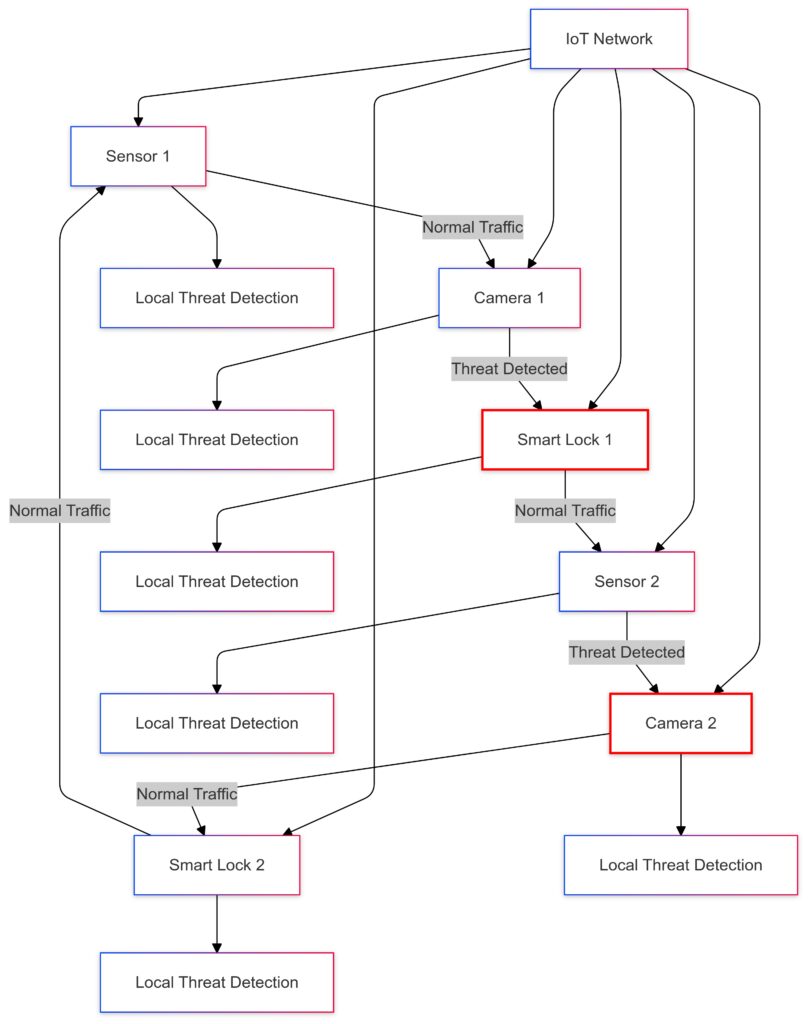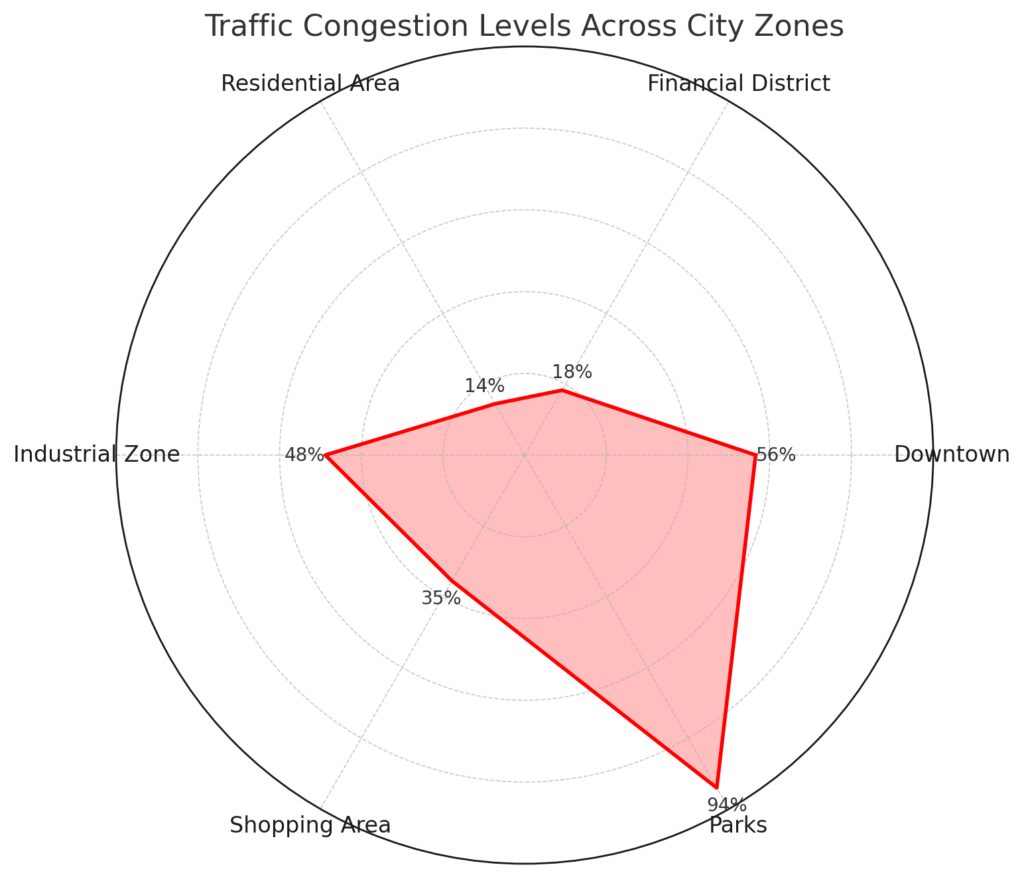
Tsetlin machines are standing out as a potential substitute for the conventional machine learning algorithms, they have come to light in recent times particularly in the areas of real-time, edge computing, and IoT applications.
The Tsetlin machines are based on a unique learning mechanism that relies on propositional logic. This makes them a computationally efficient and highly adaptable option for processing complex data patterns. In this article, we’ll explore how these machines are making waves in real-time applications within edge computing and IoT environments.
Streamlined Pattern Recognition in IoT Networks
Efficient Data Processing on the Edge
IoT networks generate vast amounts of data that require processing closer to the data source, a demand met by edge computing. However, standard machine learning models are often too resource-intensive for real-time, low-power environments. Tsetlin machines offer an efficient, scalable alternative by operating on low-complexity logic-based algorithms that fit perfectly in edge devices. They minimize processing power while handling complex decision-making tasks, allowing real-time data processing directly on IoT devices.

For example, Tsetlin machines can monitor smart meters in energy grids, recognizing consumption patterns without sending large datasets to central servers. This approach not only saves bandwidth but also increases responsiveness, critical in high-speed IoT setups like industrial automation or autonomous vehicles.
Energy-Efficient Anomaly Detection
Traditional anomaly detection algorithms require substantial computational resources, making them less practical in IoT. Tsetlin machines shine here, delivering a lightweight solution that can quickly flag unusual patterns. These machines are particularly suitable for detecting real-time anomalies in sensor data from equipment or infrastructure. For instance, they can identify sudden temperature spikes or pressure changes in industrial sensors, prompting immediate action to prevent malfunctions.
This low-power approach is particularly valuable in battery-operated IoT devices, extending device life and ensuring that critical anomalies are flagged without requiring continuous connectivity.

Adaptive Fault Detection in Smart Cities

Real-Time Fault Detection for Urban Infrastructure
Smart cities rely on real-time data from IoT-enabled infrastructure—traffic signals, surveillance systems, and public utilities—to operate smoothly. However, faults in such systems can lead to cascading problems, from traffic delays to security vulnerabilities. Tsetlin machines, with their adaptability and high efficiency, are ideal for monitoring city infrastructure and quickly detecting system faults, such as failed sensors or connectivity issues.
By analyzing data directly on-site, Tsetlin machines reduce the need for transmitting data to centralized cloud servers, saving time and bandwidth. Cities can deploy these machines in traffic management systems, enabling immediate response to irregular traffic flow or outages in street lighting, all while minimizing system strain.

Blue for Traffic Signals
Yellow for Public Lighting
Purple for Power Grids
Enhancing Predictive Maintenance Strategies
Predictive maintenance is crucial in smart city environments, where infrastructure must operate seamlessly. Tsetlin machines allow for on-device analysis, providing timely predictions about when maintenance should occur. For instance, by continuously analyzing the data from elevator or escalator sensors, these machines can determine wear-and-tear levels and suggest maintenance well before breakdowns occur.
This use of edge processing reduces the operational cost associated with untimely repairs, contributing to longer-lasting infrastructure and more sustainable cities.
Enhanced Security in Distributed IoT Devices

Real-Time Cyber Threat Detection
With more IoT devices online, cybersecurity threats are a growing concern, especially when data flows through multiple network layers. Tsetlin machines can bolster security by running lightweight threat detection algorithms directly on IoT devices, preventing breaches at the source. Unlike traditional machine learning models, which require significant computational power, Tsetlin machines’ logic-based approach makes them ideal for resource-limited devices on the edge.
For example, Tsetlin machines can identify and respond to unusual network traffic patterns in real-time. This is particularly valuable in distributed systems, where centralized security models may struggle to address individual devices’ vulnerabilities. Such proactive threat detection can safeguard critical data, preventing potential breaches in home automation, healthcare devices, and smart industrial equipment.

Access Control and Authentication
Another significant security application lies in managing access control in IoT systems, which often lack robust user authentication. Tsetlin machines can analyze login patterns and identify unusual access attempts with a lightweight footprint. In a smart home context, they could detect irregular login attempts to security cameras or smart locks and flag these as potential intrusions.
This level of real-time security is particularly helpful in smart buildings, where access to facilities may vary by personnel and time. By employing Tsetlin machines at each access point, facility managers can ensure a high level of security without overwhelming network resources.
Advanced Data Compression for IoT Sensors
Real-Time Data Reduction on Edge Devices
IoT devices continually produce data, but bandwidth constraints mean not all data can be transferred to the cloud for analysis. Tsetlin machines offer a real-time data compression solution that intelligently reduces the data volume while preserving critical information. This is particularly useful for remote or resource-limited locations, like rural areas with minimal connectivity, where only essential insights need to be communicated.
For instance, in environmental monitoring setups, Tsetlin machines can analyze data from air quality sensors and transmit only key anomalies or trends. This approach not only saves bandwidth but also conserves power, crucial for solar-powered devices or remote monitoring stations.
Aggregating Data Across Multiple Sensors
In scenarios where multiple IoT sensors collect overlapping data, Tsetlin machines can identify redundancies and aggregate insights, minimizing transmission and storage requirements. Smart agriculture systems, for example, may use numerous soil moisture and temperature sensors. Tsetlin machines can process these sensor outputs locally, transmitting only essential readings, which optimizes data flow without losing relevant information.
This data aggregation improves the overall efficiency of IoT networks, especially in scaling environments, where adding new sensors could otherwise overwhelm existing infrastructure.
Intelligent Resource Allocation in Smart Grid Systems
Dynamic Load Balancing for Energy Efficiency
In modern smart grids, managing energy distribution across a network is crucial for maintaining efficiency and preventing outages. Tsetlin machines enable real-time decision-making on edge devices in smart grids, which helps to optimize energy usage dynamically. By analyzing data from smart meters and substations, these machines can predict demand spikes or dips and suggest load balancing measures instantly.
This dynamic load balancing reduces peak loads, helping utility companies avoid blackouts and lower operational costs. Additionally, it supports energy efficiency by making sure power is directed only where it’s needed, optimizing resource usage across the network without relying heavily on cloud-based computations.
Real-Time Forecasting for Renewable Energy Sources
Renewable energy sources like solar and wind are inherently variable, requiring effective forecasting to balance supply with demand. Tsetlin machines allow real-time forecasting directly at the energy source. For instance, they can analyze patterns in wind speed data or sunlight exposure and predict energy output, providing utility providers with timely data to make adjustments.
By deploying Tsetlin machines at renewable energy collection sites, providers gain localized control over energy data processing, which contributes to smoother grid integration of renewables, increasing the stability and reliability of green energy resources in the grid.
Real-Time Behavioral Analysis in Connected Healthcare
Monitoring Patient Vitals with Minimal Latency
In connected healthcare, IoT-enabled wearables and sensors can constantly monitor patient vitals, including heart rate, blood pressure, and oxygen levels. Tsetlin machines can process this data in real-time, right on the device, to detect abnormalities as they happen. This on-device processing minimizes latency, which is essential in healthcare scenarios where immediate responses are critical.
For instance, in remote monitoring of chronic conditions like heart disease, Tsetlin machines can instantly identify deviations from typical patterns and alert healthcare providers, enabling prompt intervention. This approach conserves bandwidth, as only critical alerts are transmitted, and patients receive real-time monitoring with greater reliability.

Fall Detection and Emergency Alerts for Elderly Care
Tsetlin machines are also valuable in monitoring movements to prevent falls among elderly individuals. By analyzing sensor data from wearables or cameras in elderly care facilities, they can detect unusual movements or potential falls and issue emergency alerts instantly. This kind of real-time behavioral analysis is especially effective because it operates with low power, making it practical for continuous monitoring in resource-constrained environments like home care devices.
This application not only enhances safety but also reduces response times, providing family members and caregivers with peace of mind and ensuring elderly individuals receive timely help in emergencies.
Adaptive Traffic Management in Transportation Networks
Real-Time Traffic Flow Optimization
Transportation networks are increasingly using IoT-enabled cameras and sensors to manage traffic flow. Tsetlin machines can analyze real-time traffic data on the edge, adjusting signal timings, rerouting traffic, or providing alternative routes to reduce congestion. By doing this analysis directly on local devices, they avoid the delays associated with sending data to centralized servers.
For example, Tsetlin machines can instantly identify areas where congestion is forming and reconfigure nearby traffic lights to ease bottlenecks. This localized traffic management keeps cities moving smoothly, particularly during peak hours, by rapidly adapting to changes in real-time without overloading central servers.

Monitoring Public Transport for Improved Efficiency
Tsetlin machines also benefit public transportation by analyzing vehicle occupancy and arrival times. Buses and trains equipped with Tsetlin machine-powered sensors can track delays or overcrowding, providing the system with immediate data to make route adjustments. This ensures efficient fleet management, reducing wait times for passengers and maximizing the utilization of each vehicle.
In the event of a delay, for instance, adaptive scheduling based on real-time data can reroute buses or adjust frequencies, providing passengers with a smoother and more reliable transportation experience.
FAQs
What makes Tsetlin machines suitable for edge computing?
Tsetlin machines use logic-based learning, which is highly efficient and lightweight compared to traditional machine learning models. Their low computational requirements make them perfect for resource-constrained environments typical in edge computing, allowing devices to process data quickly and locally without relying on cloud resources. This efficiency is essential for real-time applications where latency and power constraints are major considerations.
How do Tsetlin machines improve IoT security?
Tsetlin machines can perform real-time anomaly detection and monitor data patterns, helping to detect potential security threats directly on IoT devices. This allows for immediate responses to unusual behaviors, like unexpected access attempts or traffic spikes, which can signal a cyber attack. Their efficient processing means they can run on low-power devices, protecting networks at the edge without overwhelming system resources.
Can Tsetlin machines handle large-scale data in IoT environments?
While Tsetlin machines are designed for efficiency, they may face limitations with massive datasets typical in big data contexts. However, they excel in environments where localized data processing is essential, such as monitoring specific sensor metrics or handling smaller subsets of data in real time. In large-scale setups, they can work in tandem with more powerful cloud systems, handling initial data filtering and processing on the edge to reduce the load on central servers.
Are Tsetlin machines useful in predictive maintenance?
Yes, Tsetlin machines are highly effective for predictive maintenance in industries like manufacturing and infrastructure. By processing sensor data directly on devices, they can identify patterns that indicate potential equipment failures, enabling preemptive maintenance scheduling. This localized decision-making approach minimizes downtime and reduces the cost associated with unexpected repairs, making it a valuable tool for maintaining the health of critical equipment in IoT environments.
Do Tsetlin machines work well with other AI technologies?
Tsetlin machines are often deployed alongside other AI models, especially in systems that require hybrid processing. For example, Tsetlin machines can handle real-time, lightweight tasks on edge devices, while more complex data analysis can be managed by deep learning models in the cloud. This complementary approach leverages the strengths of each technology, optimizing performance across both edge and centralized systems.
How do Tsetlin machines support real-time decision-making in IoT?
Tsetlin machines are built for fast, efficient processing, enabling real-time decision-making directly on IoT devices. Unlike traditional machine learning models, which often need extensive computing power, Tsetlin machines rely on simple logic-based rules to make quick decisions without needing to send data to the cloud. This ability to act instantly is critical in scenarios like traffic management, industrial automation, and healthcare monitoring where delays could lead to safety risks or operational inefficiencies.
Are Tsetlin machines energy-efficient compared to other machine learning models?
Yes, Tsetlin machines are extremely energy-efficient. Traditional machine learning algorithms often require significant processing power, which drains battery-operated IoT devices. Tsetlin machines, however, use simple logical operations and Boolean expressions that consume minimal energy, making them ideal for battery-powered devices in remote or constrained environments. This efficiency extends the operational life of IoT devices and ensures reliable performance in energy-sensitive applications.
How are Tsetlin machines used in smart city applications?
In smart cities, Tsetlin machines enable real-time monitoring and fault detection in urban infrastructure, such as traffic lights, energy grids, and public surveillance systems. By processing data on the edge, these machines can detect and respond to irregularities—like traffic jams or infrastructure faults—right when they happen. Their adaptability allows for scalable deployment across large networks, supporting essential functions like dynamic traffic management and predictive maintenance to keep cities running smoothly.
Do Tsetlin machines require special hardware to operate?
One of the biggest advantages of Tsetlin machines is that they don’t require specialized or high-end hardware. Their design is based on low-complexity logic-based learning rather than computation-intensive processes, so they can run on standard processors found in most IoT devices. This flexibility makes them a cost-effective choice for edge computing, as they don’t require additional investments in specialized hardware to function effectively.
Can Tsetlin machines process unstructured data like images or audio?
Tsetlin machines are typically most effective with structured data, as they use propositional logic, which works best with binary or categorical information. However, researchers have started exploring ways to adapt Tsetlin machines to handle unstructured data like images and audio by transforming this data into structured formats that can be processed logically. Although still evolving, this capability could further expand Tsetlin machines’ utility in areas like image recognition or voice-activated devices in IoT.
How are Tsetlin machines different from traditional machine learning algorithms?
Tsetlin machines operate on rule-based logic rather than statistical methods, making them fundamentally different from traditional machine learning models that often rely on deep learning or neural networks. This distinction gives Tsetlin machines the advantage of simplicity, lower processing demands, and interpretability, as the rules they create are easy to understand and modify. In contrast, traditional models, while powerful, often lack transparency and require more computational power, which can be a challenge in real-time IoT and edge computing environments.
Resources
Research Papers and Journals
- “The Tsetlin Machine: A Game-Theoretic Bandit Learning Framework for Boolean Concept Learning” by Ole-Christoffer Granmo et al.
This foundational paper introduces the theory behind Tsetlin machines and their logical approach to learning, making it an excellent starting point for understanding how they differ from traditional models.
Read the paper on arXiv